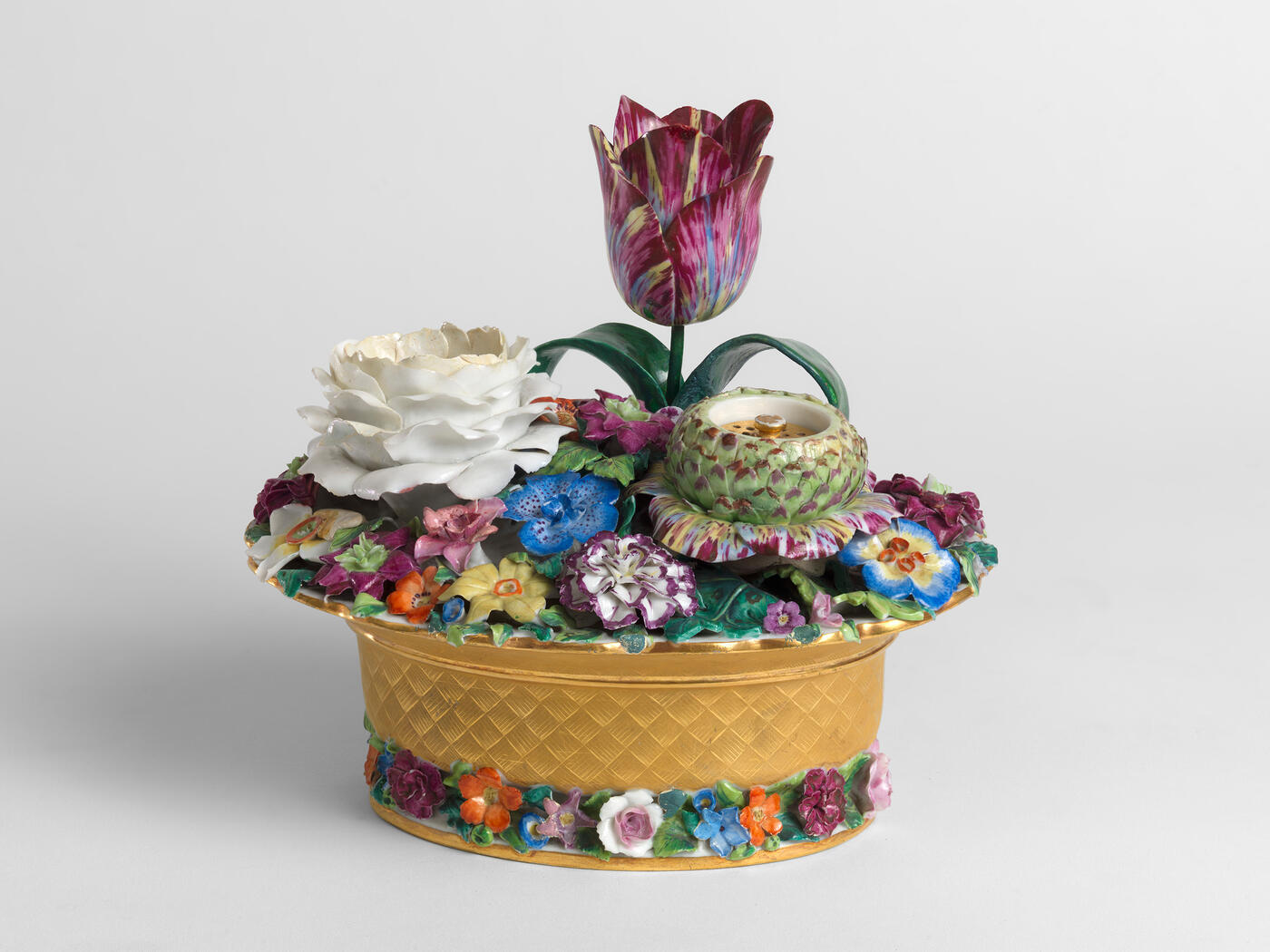5 June 2019 Important Russian Art Auctions, at Asia House
5 June 2019

375.
A Rare Imperial Porcelain Inkwell
POA
IMPERIAL PORCELAIN MANUFACTORY, PETR IVANOV, PERIOD OF NICHOLAS I (1825–1855), EASTER 1836
Length 18 cm, width 15 cm, height 16 cm.
In style of the second Rococo, shaped as an oval basket filled with flowers; the gilt body imitating basket weave and decorated with a band of hand moulded flowers, the moulded colourful flowers with gilt ceramic liners, the reverse with blue Imperial cypher for Nicholas I.
Provenance: Gift to the Empress Alexandra Feodorovna for Easter in 1836. Empress Maria Feodorovna (1847–1928).
Grand Duchess Xenia Alexandrovna (1875–1960).
Thence by descent to HH Princess Olga Andreevna Romanoff (b. 1950) until 2008.
Important private collection, Europe.
The inkwell is executed in the second Rococo style, popular towards the middle of the 19th century forms part of the Easter gifts delivered to the Imperial Family in spring 1836. During the reign of Nicholas I, the traditional gifts presented to the Empress Alexandra Feodorovna by the Imperial Manufactory for Christmas and Easter included several inkwells in different styles such as “seashell”, “house”, “with swans and garlands”, “mill” etc. According to research of a renowned porcelain scholar Natalia Petrova, one such gift was the offered inkwell. It is described in “the Registry of painted objects presented to the Emperor for Easter 1836” under column “For Her Imperial Highness” as “inkwell made of flowers, with painted and gilded decoration” to the value
of 80 Roubles (Russian State Historical Archive or RGIA, folio 468, inventory 10, doc. 2, f. 74).
The technical mastery, the composition of porcelain paste, the abundance of flower decoration executed with a minuteness of detail, the expressive style and the richness of colours all testify to the outstanding skills of the master Petr Ivanov (circa 1780–1851). A hereditary porcelain artist, Ivanov studied at the Manufactory’s art school and also from his father, a chemist, who worked as a paste maker during the reign of Catherine II. He was responsible for inventing new formulas of biscuit pastes and methods of making flowers, unsurpassed as to the fineness of their moulding. One of his most celebrated compositions, known as “Biscuit Flower bouquet” on a circular plate, shaped as a table was presented to the Emperor for Christmas in 1850 and was intended for the World Exhibition of 1851 in London. However, due to its fragility the masterpiece could not be safely transported and remained in the Manufactory’s museum. The offered lot features perfect lifelike imitations, which required exceptional artistic and technical skills and are a testimony to the work of this legendary porcelain virtuoso. His creations became the hallmark of the period; after his death the composition formulas were lost, signifying the end of the era of the high art of moulded flowers.
Notes on symbols:
* Indicates 5% Import Duty Charge applies.
Ω Indicates 20% Import Duty Charge applies.
§ Indicates Artist's Resale Right applies.
† Indicates Standard VAT scheme applies, and the rate of 20% VAT will be charged on both hammer price and premium.